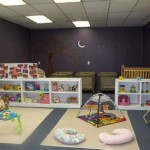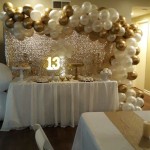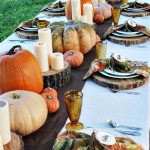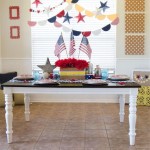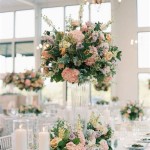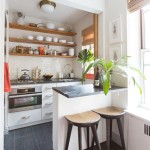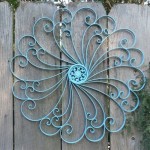Living Dining Room Decor Decorating Ideas
The concept of a combined living and dining room has gained immense popularity in contemporary home design. This fusion space offers versatility and efficiency, particularly beneficial in apartments and smaller homes. However, merging these two distinct areas requires careful planning and execution to maintain a cohesive and functional design. The goal is to create a harmonious environment that seamlessly transitions from relaxation and entertainment to dining and socializing.
This article explores various decorating ideas for a combined living and dining room, focusing on key elements such as space planning, furniture selection, color palettes, lighting, and decorative accents. These elements will be discussed with the aim of providing practical guidance for creating a stylish, functional, and inviting living dining room space.
Defining Zones within the Open Space
One of the primary challenges in decorating a living dining room is establishing distinct zones for each activity. Without clear demarcation, the space can feel cluttered and disorganized. Several techniques can be employed to visually and physically separate the living and dining areas.
Area Rugs: Using area rugs is a simple yet effective way to define zones. A large rug under the living room furniture, such as the sofa and coffee table, creates a cozy and inviting seating area. Similarly, a separate rug beneath the dining table anchors the dining space and visually separates it from the living area. Choosing rugs with different patterns or textures can further emphasize the distinction between the two zones.
Furniture Placement: Strategic furniture placement can act as a natural divider. For example, a large sofa can be positioned to create a visual barrier between the living and dining spaces. A console table or bookshelf placed behind the sofa can further enhance this separation, providing additional storage and decorative opportunities. Similarly, the arrangement of dining chairs and sideboards can delineate the boundaries of the dining area.
Color and Texture: Employing different color palettes or textures can also contribute to zone definition. For instance, the living area could feature warm, earthy tones, while the dining area incorporates cooler, more sophisticated shades. Accent walls, wallpaper, or different paint finishes can also be used to subtly differentiate the two spaces. Consider using textured fabrics in the living area to create a softer, more relaxed atmosphere, while opting for smoother, more durable materials in the dining area for easy cleaning.
Screen Dividers and Curtains: Physical barriers, such as screens or curtains, can provide a more pronounced separation between the living and dining areas. Decorative screens, whether freestanding or mounted, can add visual interest while creating a sense of privacy. Curtains, especially those made of sheer or lightweight fabrics, can offer a softer, more flexible division, allowing natural light to flow through while still defining the separate spaces.
Selecting Complementary Furniture
Choosing the right furniture is crucial for creating a cohesive and functional living dining room. The furniture should not only be stylish and comfortable but also appropriately sized and proportioned for the space. Consider the overall style of the home and select furniture that complements it.
Living Room Furniture: The living room furniture should be comfortable and conducive to relaxation and socializing. A sofa is typically the focal point of the living area, so choose one that is both visually appealing and comfortable to sit on. Consider the size and configuration of the sofa to ensure it fits comfortably within the space and allows for ample seating. Additional seating options, such as armchairs, loveseats, or ottomans, can be added to create a more flexible and inviting seating arrangement. A coffee table is an essential piece of living room furniture, providing a surface for drinks, books, and decorative items. Choose a coffee table that is appropriately sized for the sofa and the overall space.
Dining Room Furniture: The dining room furniture should be functional and stylish, providing a comfortable and inviting space for meals and gatherings. The dining table is the centerpiece of the dining area, so choose one that is appropriately sized for the space and the number of people you typically entertain. Consider the shape of the table, as rectangular tables are typically best suited for larger spaces, while round or oval tables can work well in smaller areas. Dining chairs should be comfortable and supportive, and they should complement the style of the dining table. A sideboard or buffet can provide additional storage for dishes, linens, and other dining essentials. Choose a sideboard that is both functional and stylish, and that complements the overall design of the dining area.
Multifunctional Furniture: In a combined living and dining room, multifunctional furniture can be particularly useful. For example, a coffee table with built-in storage can provide a place to store books, magazines, and other items, while a dining table with extendable leaves can accommodate extra guests when needed. A sofa bed can provide a comfortable sleeping space for overnight guests, while a storage ottoman can provide both seating and storage. By incorporating multifunctional furniture, one can maximize the space and functionality of the living dining room.
Maintaining Visual Harmony: While defining zones is important, it is equally crucial to maintain a sense of visual harmony between the living and dining areas. Choose furniture pieces that complement each other in terms of style, color, and materials. For example, if the living room features modern furniture with clean lines, the dining room furniture should also have a modern aesthetic. Similarly, if the living room incorporates warm, earthy tones, the dining room should also feature similar colors, either in the furniture itself or in the accessories and décor. This creates a sense of continuity and cohesion throughout the space, making it feel more unified and harmonious.
Enhancing the Space with Lighting and Accessories
Lighting and accessories play a vital role in creating a welcoming and stylish living dining room. Strategic lighting can enhance the ambiance of the space, highlighting focal points and creating a warm and inviting atmosphere. Accessories, such as artwork, cushions, and plants, can add personality and character to the room, reflecting the homeowner's individual style and taste.
Lighting Strategies: A well-lit living dining room should incorporate a variety of lighting sources, including ambient lighting, task lighting, and accent lighting. Ambient lighting provides overall illumination for the space, creating a comfortable and welcoming atmosphere. This can be achieved through ceiling fixtures, such as chandeliers, pendant lights, or recessed lighting. Task lighting provides focused illumination for specific activities, such as reading or dining. This can be achieved through table lamps, floor lamps, or pendant lights over the dining table. Accent lighting highlights specific features of the room, such as artwork, architectural details, or decorative objects. This can be achieved through spotlights, track lighting, or wall sconces.
Color Temperature and Dimming: When selecting light bulbs, consider the color temperature. Warm white bulbs (2700-3000K) create a cozy and inviting atmosphere, while cool white bulbs (3500-4100K) provide a brighter, more energizing light. Dimmable switches allow to adjust the intensity of the lighting to suit the mood and activity. For example, dimming the lights during dinner can create a more intimate and relaxing atmosphere.
Decorative Accessories: Accessories provide an opportunity to personalize the living dining room and add visual interest. Artwork, such as paintings, prints, or sculptures, can add color, texture, and personality to the walls. Cushions and throws can add comfort and style to the seating areas. Plants can bring life and freshness to the space, adding a touch of nature. Mirrors can reflect light and create the illusion of more space. Choose accessories that complement the overall style of the room and reflect the homeowner's individual taste.
Coordinating Accessories: While it is important to personalize the living dining room with accessories, it is also crucial to maintain a sense of visual harmony. Choose accessories that complement each other in terms of color, texture, and style. Avoid overcrowding the space with too many accessories, as this can make it feel cluttered and disorganized. Instead, focus on selecting a few key pieces that will make a statement and add personality to the room. Consider the scale of the accessories in relation to the size of the space. Large-scale accessories can work well in larger rooms, while smaller accessories are better suited for smaller spaces.
Rethinking Vertical Space: Utilize vertical space to maximize storage and display options. Install shelves above the sofa or dining table to display books, plants, or decorative objects. Hang artwork vertically to draw the eye upward and create a sense of height. Consider installing a tall bookshelf or étagère to create a dramatic focal point and provide ample storage space.

Living Room And Dining Decorating Ideas Design

5 Tips For Decorating A Combined Living Dining Room Happily Ever After Etc

Living Room And Dining Decorating Ideas Design

Cozy Dining Room Decorating Ideas Sanctuary Home Decor

77 Best Living Room Decor Ideas 2024 Unique

Get The Ideal Rectangle Living Room Dining Combo Now

Living Room Ideas Decorating Decor Topics

100 Designer Dining Room Decorating Ideas

Dining Room Corner Decorating Ideas Space Saving Solutions

How To Arrange Furniture In A Long Narrow Living Room Solutions For Tricky Spaces

